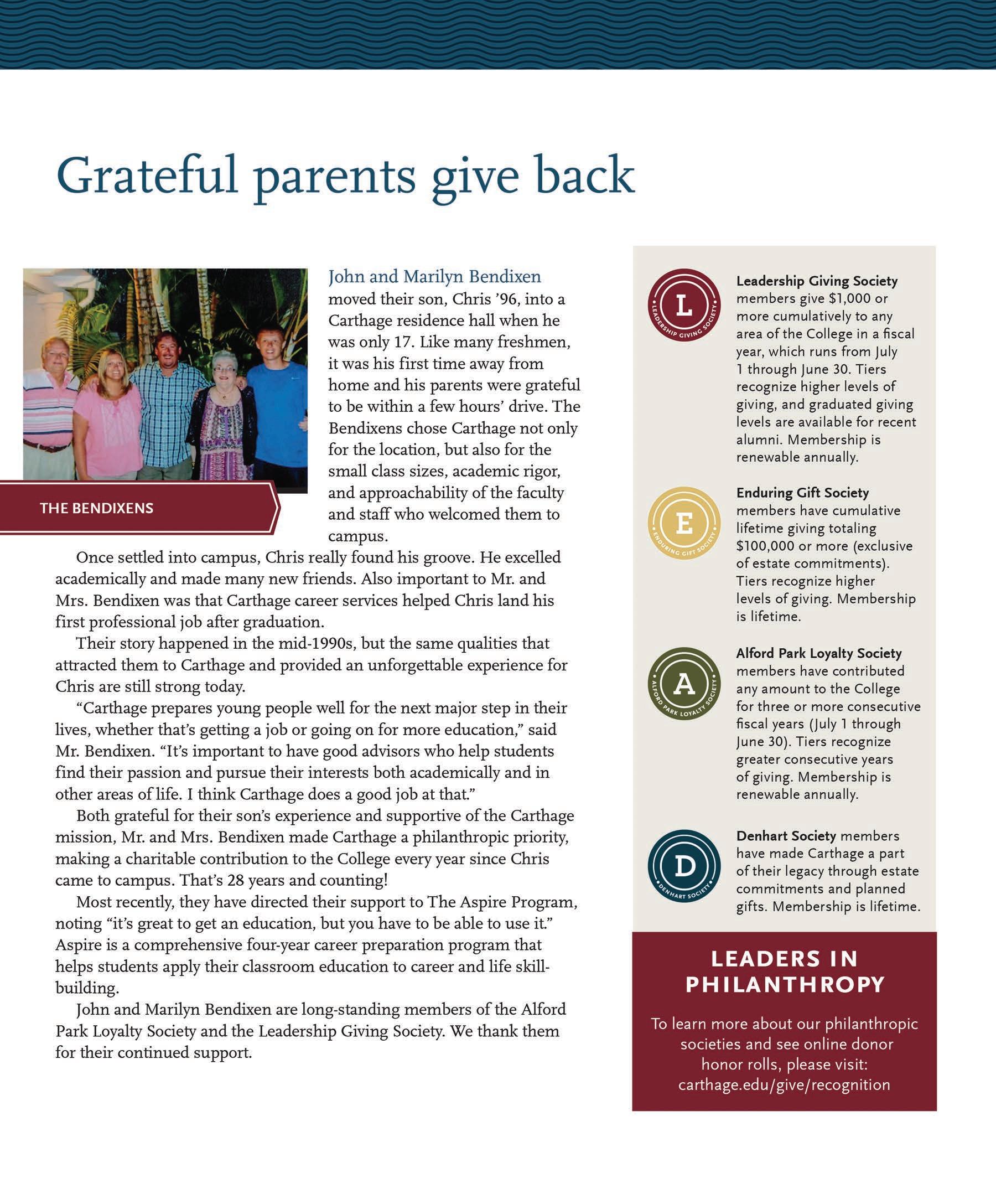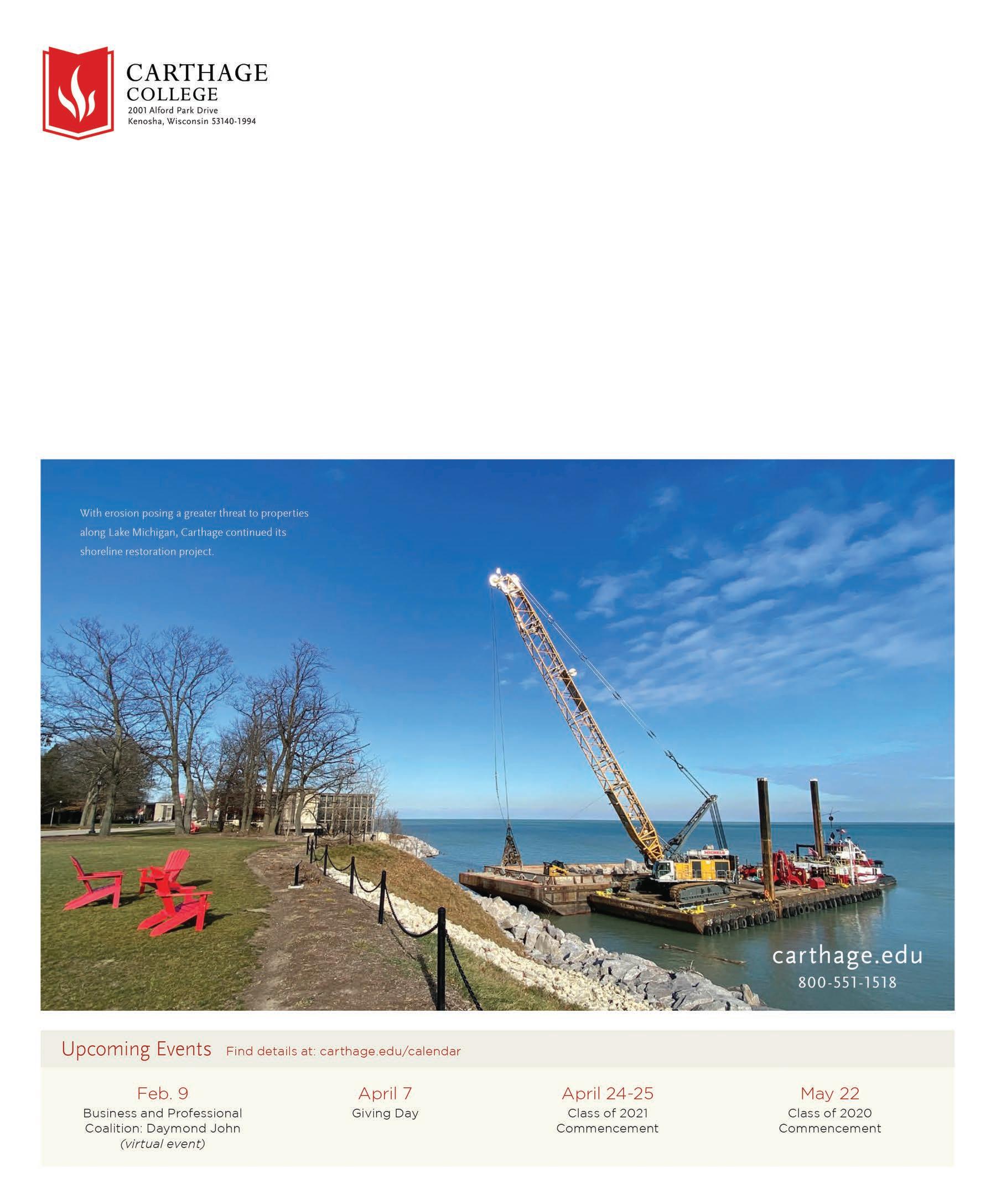
2 minute read
Page From the Past
Torch stayed lit during an American injustice
Throughout Carthage history, you’ll find stories of students making epic journeys to continue their education.
A prime example is the late Isabel (Miyata) Benson ’47, who enrolled during World War II — a particularly difficult time for Japanese Americans. Despite being born in Baltimore and sharing a July 4 birthday with Uncle Sam, she discovered what can happen when a country chooses paranoia over patriotic sensibility.
Like more than 100,000 U.S. residents with varying degrees of Japanese ancestry, the Miyata family was uprooted from its California home and held for several months at the Topaz internment camp in central Utah. Isabel’s father had emigrated from Japan years earlier, and her mother was white.
On-site schools kept K-12 learning somewhat on track in the camps, but students seeking a college education had to wait unless they could gain clearance to enroll somewhere outside the exclusion zone. Religious organizations and higher ed leaders came together to form a Student Relocation Council, which helped to match students with institutions in the Midwest and East Coast.
Many universities declined to accept the detainees, hiding behind flimsy public relations excuses. Carthage president Rudolph G. Schultz, on the other hand, worked with the council to bring three students to the small college in western Illinois.
Isabel arrived at the Carthage, Illinois, campus midway through World War II in need of a warm welcome. While residence halls never get confused with five-star hotels, the Carthage women’s dormitory must have seemed like a five-star hotel compared to the hastily built barracks at the Topaz camp.
For at least a portion of her time on campus, Isabel roomed with another Carthage trailblazer: Lorraine Wiggan ’46, the College’s first Black graduate and one-half of the namesake for today’s Wiggan-Kenniebrew Black Alumni Network.
The 1945 Crimson Rambler yearbook gives us a snapshot of life at Denhart Hall. Reaching their room on the second floor’s north wing, the writer finds “Isabel busily pecking away at the typewriter while Lorraine prepares to leave for her second home — the music hall.”
Of the relocated students who enrolled, Isabel was the only one to stay at Carthage for the entire four years. She earned a degree in history with
Isabel Miyata ’47, right, with Margaret McNeill ’48
minors in English and French while participating in choir, student government, the yearbook, the Home Economics Club, the YWCA, the Missionary Society, and the Luther Society.
Records show the Miyata family resettled in the Fort Wayne, Indiana, area after the internment camps closed. Isabel went on to earn a graduate degree and ultimately returned to the West Coast after marrying fellow librarian Joseph Benson. Both enjoyed lengthy careers in Stockton, California.
Decades after the war, the U.S. government formally acknowledged that Executive Order 9066 — which also authorized the internment of thousands of Americans of German and Italian descent — had been an inhumane mistake.
By extending the only olive branch they possessed — a strong and accepting place to learn — colleges like Carthage fought to make sure the affected students emerged from that dark period with their future prospects intact.
Explore the rich history of Carthage at carthage.edu/library/archives



